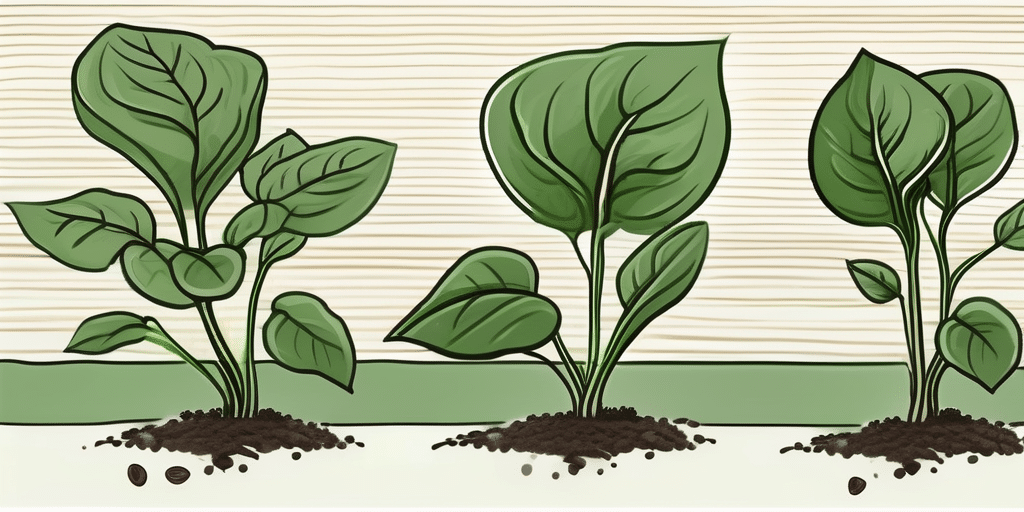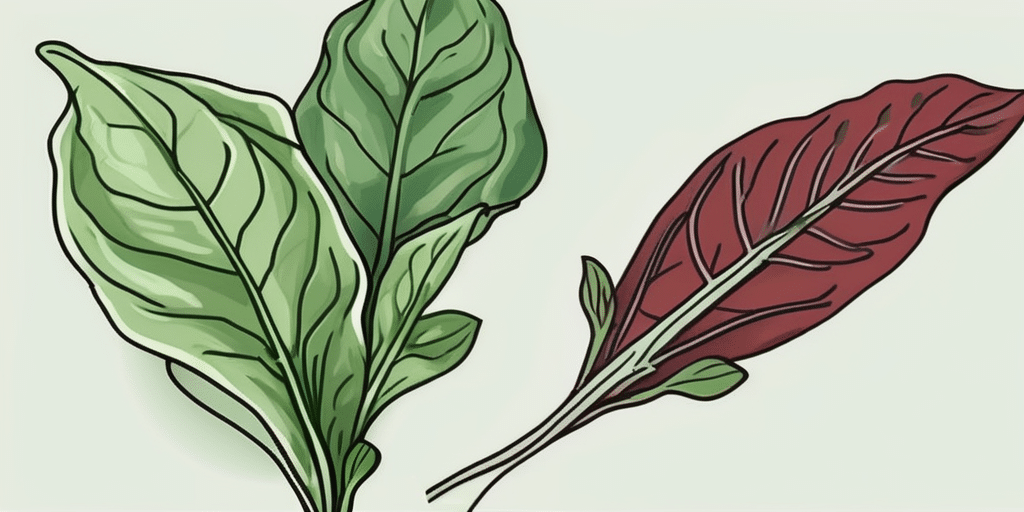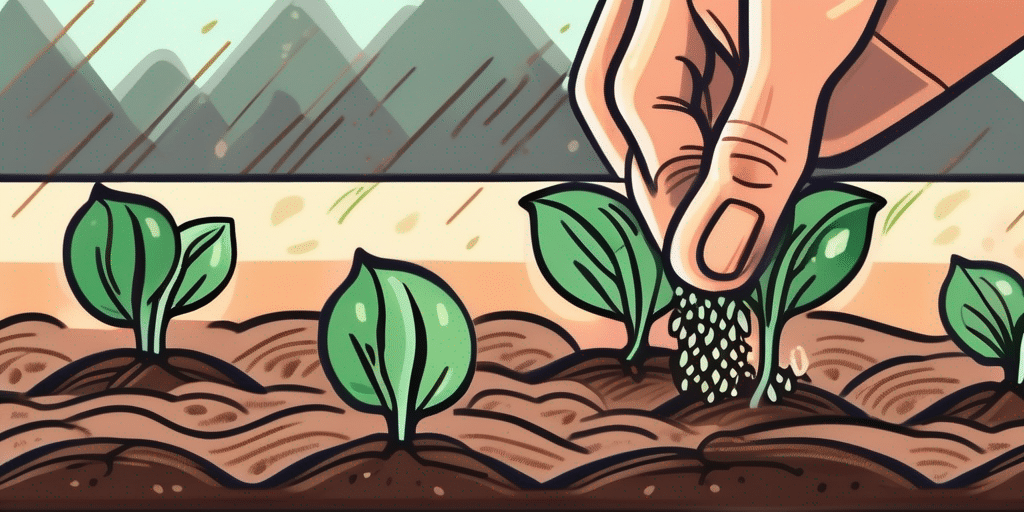America Spinach, also known as New Zealand Spinach, is a nutritious leafy vegetable that thrives in warm climates. If you live in Florida and are interested in growing your own America Spinach, this article will provide you with all the information you need to successfully plant and care for this delicious green.
Climate & Hardiness Zones in Florida
Before getting started, it’s important to understand the climate and hardiness zones in Florida. The state has a diverse range of climates, varying from tropical in the south to subtropical and more temperate in the northern regions. The USDA Hardiness Zones for Florida range from 8a to 11. Make sure to check your specific hardiness zone before planting.
Florida’s unique geography and proximity to the Gulf of Mexico and the Atlantic Ocean play a significant role in shaping its climate. The state experiences hot and humid summers, with frequent afternoon thunderstorms, especially in the summer months. Winters are mild in the southern regions but can be cooler in the northern parts of the state, occasionally experiencing frost and even rare snowfall events.
Due to its diverse climate, Florida is home to a wide variety of plant species, including tropical fruits like mangoes and avocados in the south, and more cold-hardy plants like citrus and palms in the central and northern regions. Gardeners in Florida have the opportunity to cultivate a rich assortment of plants, but it’s crucial to select species that are well-suited to the specific hardiness zone of their location to ensure successful growth and development.
When to Plant America Spinach in Florida
The ideal time to plant America Spinach in Florida is in the early spring, after the last frost has passed. This generally falls between February and April, depending on your location within the state. Planting at this time ensures that the spinach has enough time to establish itself before the hot summer months.
However, America Spinach is a versatile plant that can also be grown in the fall. If you missed the spring planting window, you can sow your spinach seeds in late September or early October, once the temperatures begin to cool down.
It’s important to note that America Spinach is more tolerant of heat than traditional spinach varieties. It can withstand higher temperatures, making it a great choice for Florida’s warm climate.
America Spinach, also known as Malabar Spinach or Indian Spinach, is a vine-like plant that is native to tropical regions. Its thick, fleshy leaves are not only delicious but also packed with nutrients like vitamins A and C, iron, and calcium. This makes it a popular choice for health-conscious gardeners looking to add a nutritious green to their diet.
When planting America Spinach, make sure to provide it with a trellis or support structure, as it is a climbing plant that can grow up to 10 feet tall. This vertical growth habit makes it an excellent choice for small gardens or spaces where ground space is limited.
How to Grow America Spinach in Florida
Growing America Spinach in Florida is relatively easy, but there are a few key considerations to keep in mind to ensure a successful harvest.
Florida, with its warm climate and ample sunshine, provides an ideal environment for growing America Spinach. This leafy green vegetable, known for its tender leaves and nutritional value, can thrive in the Sunshine State with proper care and attention.
1. Choose a Suitable Location
Select a sunny spot in your garden that receives at least 6 hours of direct sunlight each day. America Spinach also tolerates partial shade, so if you have limited sun exposure, don’t worry, it will still grow well.
When choosing a location, consider the proximity to other plants as well. America Spinach can benefit from being planted near crops like tomatoes or peppers, as they can provide some shade during the hottest parts of the day.
2. Prepare the Soil
America Spinach prefers well-draining soil that is rich in organic matter. Before planting, amend your soil with compost or well-rotted manure to improve its fertility and drainage.
Additionally, conducting a soil test can provide valuable insights into the nutrient levels and pH balance of your soil. Adjusting the pH to a slightly acidic range of 6.0-6.5 can optimize nutrient availability for the spinach plants.
3. Sow the Seeds
Sow the America Spinach seeds directly into the prepared soil, spacing them about 12 inches apart. Cover the seeds with a thin layer of soil, water gently, and keep the soil consistently moist until germination occurs.
For a continuous harvest, consider sowing the seeds in succession, every two weeks. This staggered planting schedule ensures a steady supply of fresh spinach throughout the growing season.
4. Watering and Mulching
Keep the soil evenly moist throughout the growing season. Water deeply and regularly, providing about 1 inch of water per week. Applying a layer of organic mulch around the plants will help to retain moisture and suppress weeds.
When watering, it is important to avoid wetting the leaves of the spinach plants. Wet foliage can increase the risk of diseases such as leaf spot or downy mildew. Instead, aim to water at the base of the plants, directing the water to the root zone.
5. Fertilization
America Spinach is a heavy feeder and benefits from regular fertilization. Apply a balanced organic fertilizer once a month, following the recommended dosage on the product label.
Alternatively, incorporating a slow-release fertilizer into the soil during planting can provide a steady supply of nutrients over an extended period. This reduces the need for frequent applications and ensures the spinach plants receive the necessary nourishment.
6. Pest and Disease Control
While America Spinach is generally resistant to pests and diseases, keep an eye out for common garden pests such as aphids and caterpillars. If necessary, use organic pest control methods like handpicking or applying insecticidal soap.
Regularly inspecting the plants for any signs of damage or infestation can help catch any issues early on. Maintaining good garden hygiene, such as removing any fallen leaves or debris, can also reduce the risk of diseases spreading among the spinach plants.
7. Harvesting
America Spinach can be harvested once the leaves have reached a desired size, typically around 8 inches in length. Harvesting the outer leaves and allowing the inner ones to continue growing will promote a continuous supply of fresh spinach throughout the season.
When harvesting, use a sharp pair of scissors or garden shears to cut the leaves at the base, taking care not to damage the plant. Harvesting in the morning, when the leaves are crisp and hydrated, can result in the best flavor and texture.
Remember, America Spinach is a versatile vegetable that can be enjoyed in a variety of dishes, from salads to smoothies and everything in between. So, get ready to savor the taste of homegrown goodness with your very own Florida-grown America Spinach!
FAQ – Frequently Asked Questions
Here are some common questions about growing America Spinach in Florida:
- Q: Can I grow America Spinach in containers?
- A: Yes, you can grow America Spinach in containers as long as they are deep enough to accommodate the root system. Use a premium potting mix and ensure proper drainage.
- Q: How long does it take for America Spinach to germinate?
- A: America Spinach seeds usually germinate within 10 to 14 days under optimal conditions.
- Q: Can I save seeds from my mature America Spinach plants?
- A: Yes, you can save seeds from your America Spinach plants. Allow the plants to flower and set seed, and then collect the seed pods and dry them before storing.
- Q: Are there any companion plants that go well with America Spinach?
- A: Celery, onions, and radishes are all good companion plants for America Spinach as they provide some shade and help deter pests.
Now that you have all the information you need, it’s time to get started on growing your own America Spinach in Florida. With a little care and attention, you’ll be enjoying fresh, homegrown spinach in no time!
Join How to Grow Everything for More Gardening Insights!
Ready to transform your green thumb into a garden full of lush, thriving plants? Subscribe for free to How to Grow Everything and learn how to build the garden of your dreams! Receive personalized gardening advice tailored to your Florida grow zone, experience level, and interests. We’re here to help you every step of the way, from planting America Spinach to harvesting your bountiful crops. No spam, just the best gardening tips and exclusive deals delivered straight to your inbox. Join our family of garden enthusiasts and start growing with confidence today!






